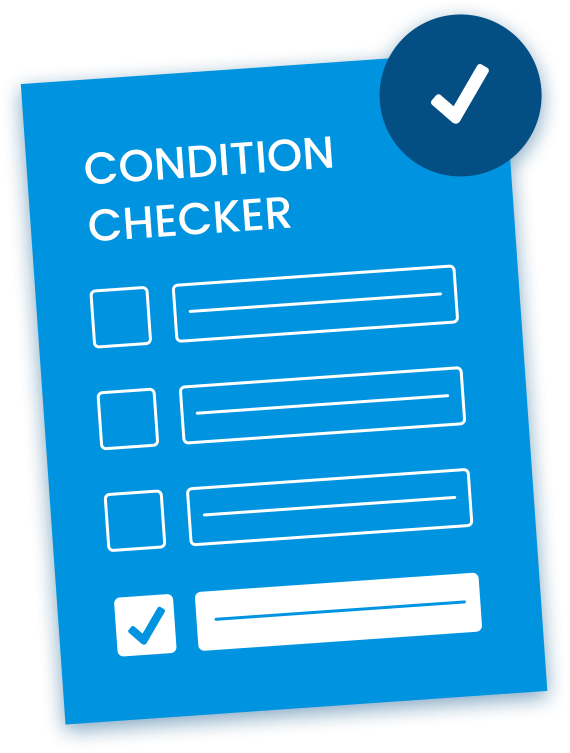Adjacent Segment Disease
Find out which possible conditions you may be suffering from by trying our 2-min Guided Pain Assessment Form!





If you have had spinal surgery, you may have heard about the potential risk of developing adjacent segment disease (ASD). This condition can occur after a spinal fusion procedure and can cause pain and discomfort in the area adjacent to the fused segments of the spine.
Our team of experts at NJ Spine & Orthopedic is dedicated to helping you understand the symptoms, causes, and treatment options for ASD so you can make informed decisions about your health. It is crucial to address these symptoms as soon as they arise in order to prevent further progression of the disease. Our Concierge Team can also help you do all the heavy lifting by making sure everything is in line for your appointment.

Find your condition with our 2-minute Condition Checker.
After undergoing spine surgery, some patients may develop ASD, which is characterized by the degeneration of the spinal segments adjacent to the site of the original surgery. When you undergo a spinal fusion surgery, the goal is to stabilize the spine and alleviate pain by fusing together two or more vertebrae. However, over time, the stress placed on the adjacent segments of the fused area can cause wear and tear, potentially resulting in ASD.
Symptoms of adjacent segment disease may include:
Often, the most notable symptoms of adjacent segment disease is pain in the area adjacent to the fused segments of the spine. This pain can be localized or radiate to other parts of the body, such as the arms or legs. In some cases, ASD can lead to the development of new problems in the spine, such as degeneration of the discs or instability of the adjacent segments.
There are several risk factors that can accelerate the onset and progression of ASD. One of the main risk factors is the fusion surgeries themselves. The fusion alters the natural movement of the spine, which can contribute to the degeneration of the adjacent segment over time.
The type of fusion surgery and the level at which it is performed can also impact the risk of developing ASD. For instance, cervical fusion and fusion surgeries in the lumbar spine have been associated with an increased risk of adjacent segment degeneration. The segments adjacent to the fused area may experience accelerated degenerative changes, leading to symptoms of adjacent segment disease.
Another important risk factor for ASD is the presence of underlying degenerative disc disease. When an intervertebral disc undergoes degeneration, it can affect the entire motion segment, including the adjacent level.
When you come to us with symptoms that may indicate ASD, such as new or worsening back or neck pain, we start by conducting a thorough physical examination and gathering a detailed medical history. This helps us understand your individual circumstances and determine the most appropriate diagnostic tests for you.
Depending on your specific symptoms and medical history, we may recommend imaging tests such as X-rays, CT scans, or MRI scans to get a clear picture of the affected area and identify any structural abnormalities. These tests allow us to assess the condition of the adjacent spinal segments and determine if there are any signs of degeneration or instability.
We may also utilize advanced diagnostic tools to further evaluate the function and movement of the adjacent segments. Through these comprehensive diagnostic measures, we are able to develop a tailored treatment plan to address your individual needs.

Discover which treatment options are right for you with our Treatment Finder.
Treatment options for adjacent segment disease may vary depending on the severity of your symptoms and the extent of the spinal changes. In some cases, conservative treatments such as physical therapy, medication, or injections may be sufficient to manage your symptoms and improve your quality of life. However, if conservative measures are not effective, surgical intervention may be necessary to address the underlying issues in the adjacent segments of the spine.
At NJ Spine & Orthopedic, our team of experienced spine surgeons is skilled in performing a variety of procedures to treat adjacent segment disease. These may include decompression of the affected nerve roots, revision of the previous fusion, or stabilization of the adjacent segments. Our goal is to provide you with the most effective and least invasive treatment options to relieve your pain and improve your overall spinal health.
The team at NJ Spine & Orthopedic understands the impact that ASD can have on your daily life, and we are here to provide you with relief. As a leading spine and orthopedic practice, our team is committed to addressing these issues and providing effective treatment options to alleviate your symptoms.
If you’re experiencing symptoms of adjacent segment disease, our team at NJ Spine & Orthopedic is here to help. Contact us today to schedule a consultation and take the first step toward finding relief from the impact of ASD. Call NJ Spine & Orthopedic at (866) 553-0612 or use our contact form.

Determine your eligibility with our Candidacy Verification.
CONTACT
Phone: 855.586.2615
Current Clients: 855.706.1011
NJ Spine and Orthopedic is dedicated to delivering minimally invasive laser spine surgeries to eliminate the pain, discomfort, and dysfunction of numerous conditions of the neck and back.
OVERVIEW
LOCATIONS
Copyright © 2025 NJ Spine & Orthopedic